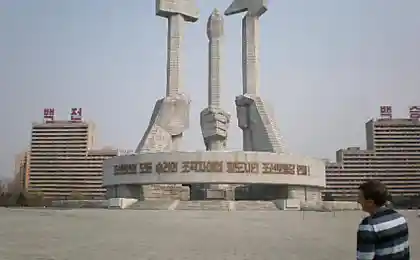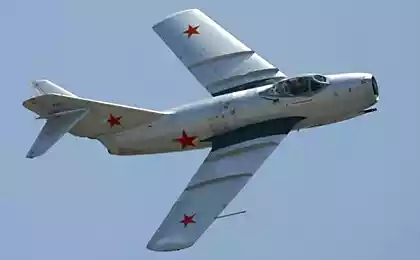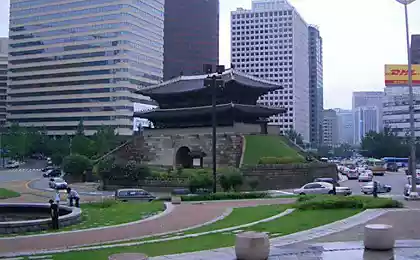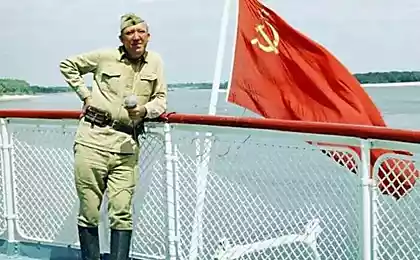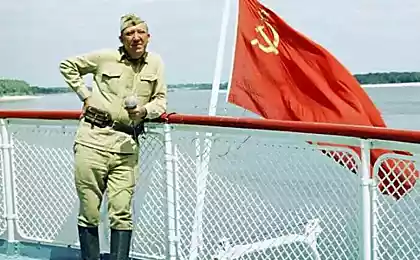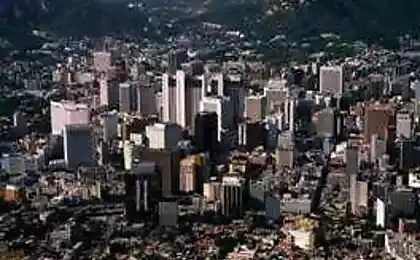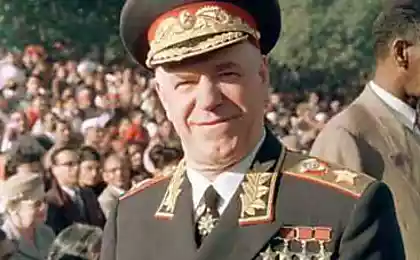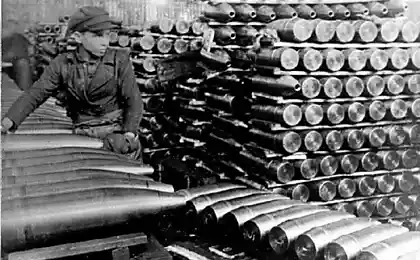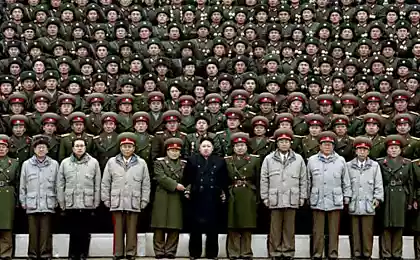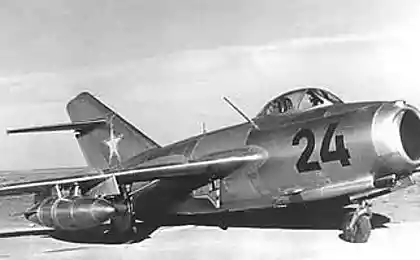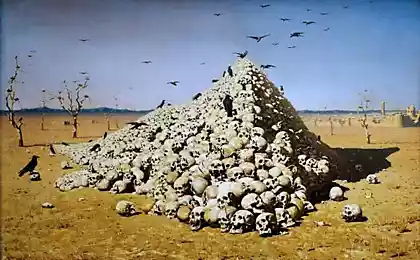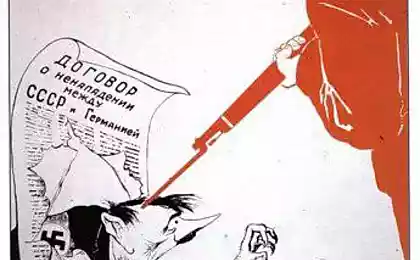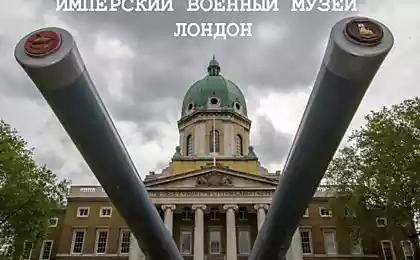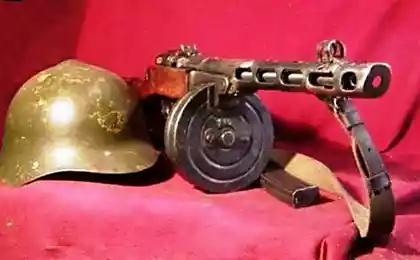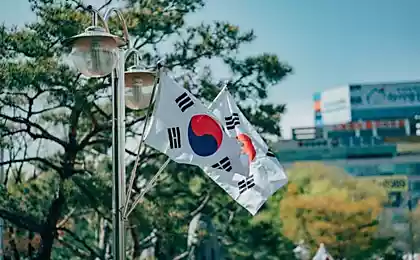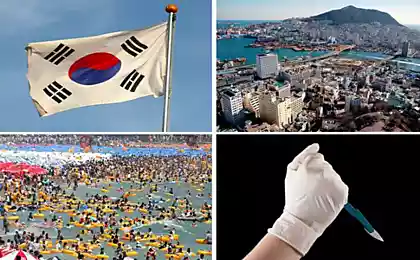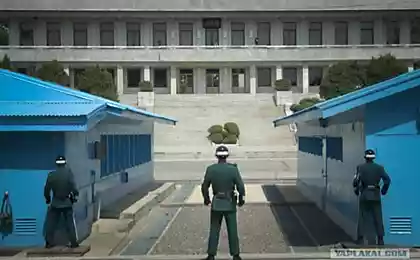1727
From the history of the Korean War (50 photos)
50 moments of the Korean War (1950-1951.)
American troops of the 1st Cavalry Division landed on the shore Pohang on the east coast of Korea. It was the first combat amphibious operation since the end of June 1950 Mirovoy.25
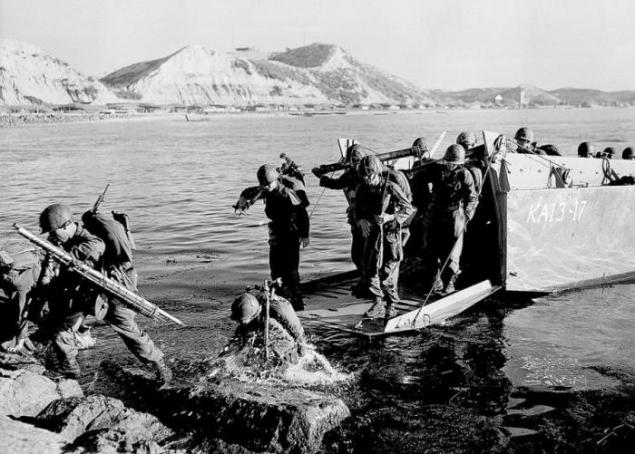
American soldiers at a railway station in Daejeon, South Korea, on the way to the front. June 25, 1950
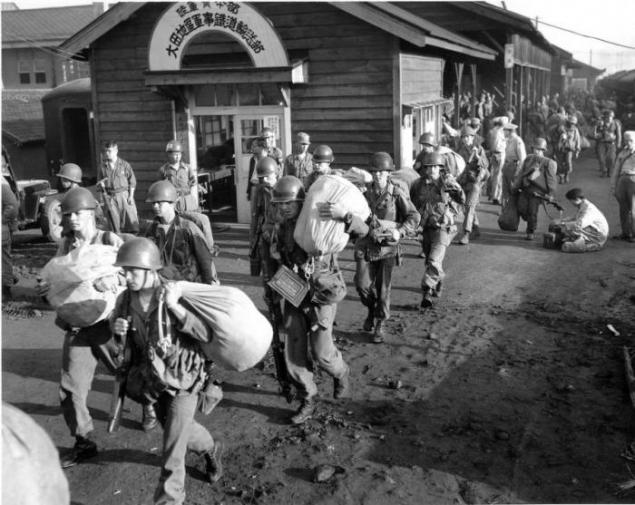
Two American soldiers of the 2nd Infantry Division used a screwdriver to search for on the road from Changnyong to Naktongangu south Daegu set guerrillas night min. June 25, 1950
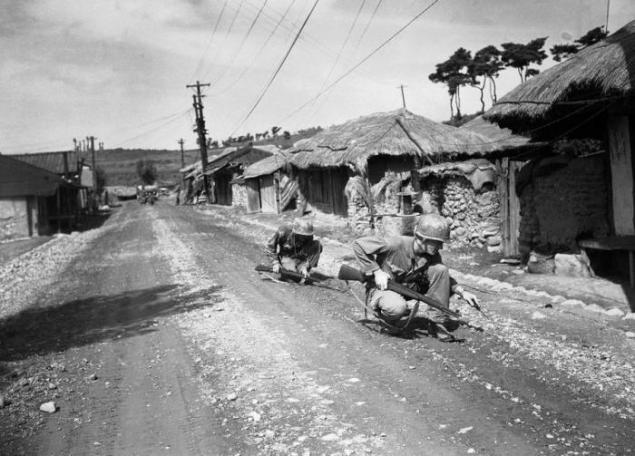
US Marines are going forward on a ridge in South Korea. June 25, 1950
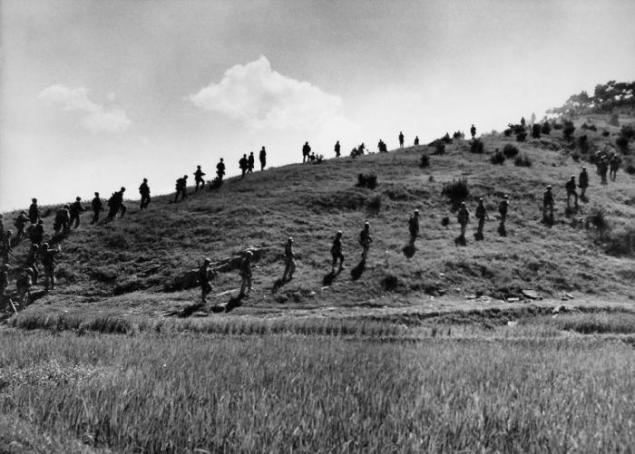
American soldiers are firing 105-mm howitzers. June 25, 1950
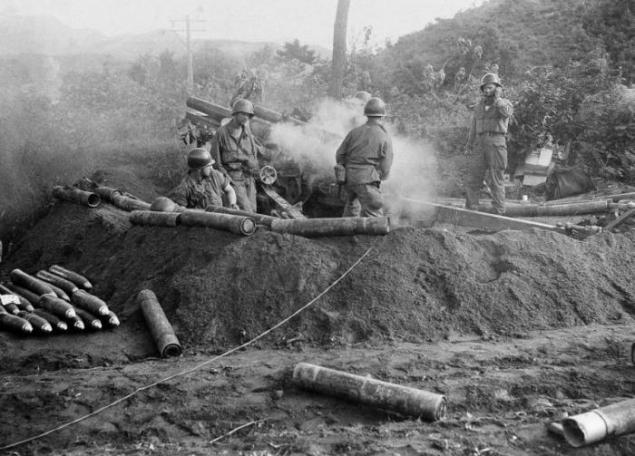
Pyongyang residents and refugees from other parts of North Korea, are moving on a destroyed bridge farm, they run south across the Taedong River from the advancing Chinese communist troops. June 25, 1950
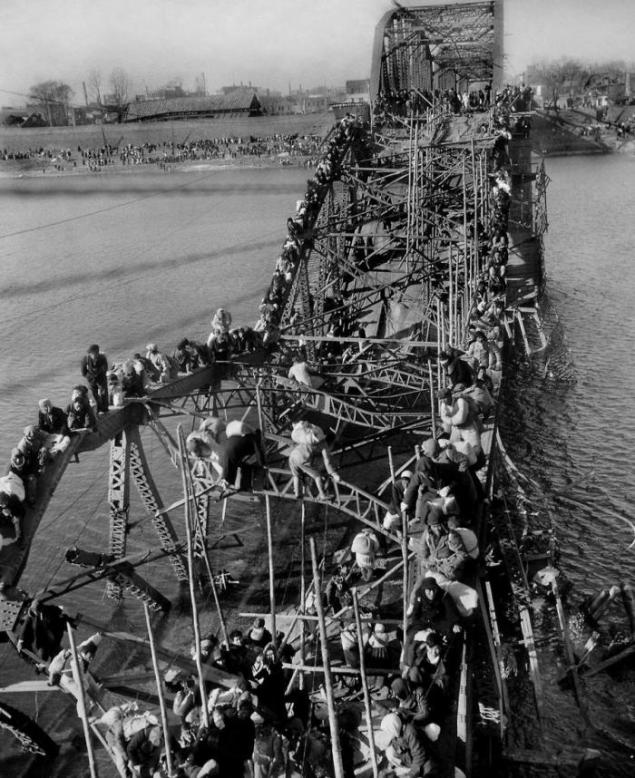
Two American soldiers on the front line somewhere in Korea with a bazooka on 24 July 1950.

Gunners of the 25th Infantry Division of firing 105-mm howitzers on North Korea's position in the region Uirson. August 27, 1950.

American infantryman crying on the shoulder of another soldier about his friend who was killed in battle. Left medic fills the documents of the death. Somewhere in Korea, 28 August 1950
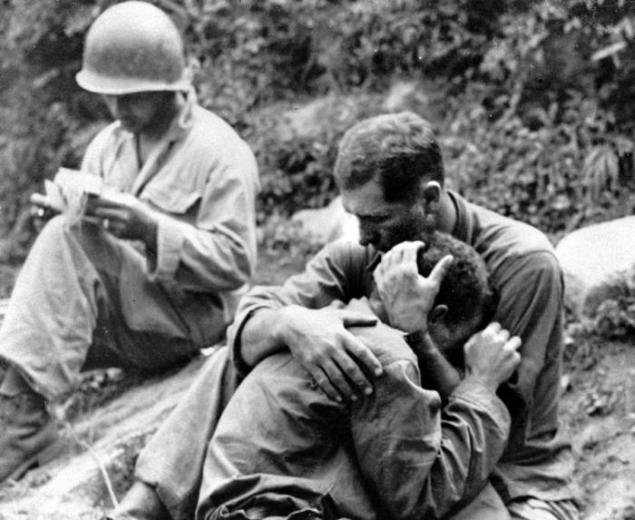
American soldiers of the 25th Infantry Division throws a grenade at the enemy sniper hiding in a village 20 miles north of Daegu, near Naktonganga, August 29, 1950
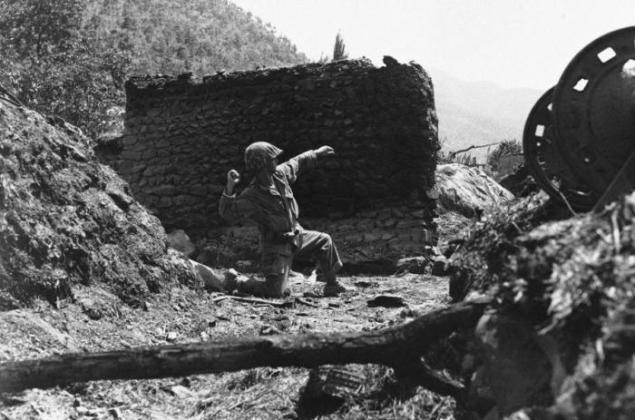
Corporal Arthur Worrell (right foreground) from New York, from the 25th Division, carries the wounded prisoners of North Koreans in the hospital for treatment. September 1, 1950
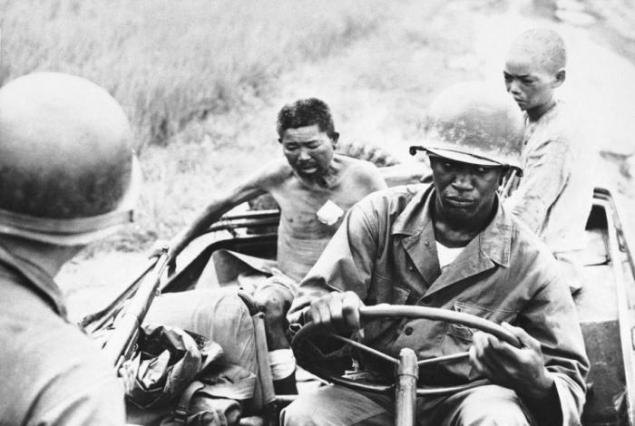
English Sergeant Derrick Deamer (left) and Private Clem Williams in full armor in the UK sector of the front in Korea in the area Naktonganga. September 14, 1950
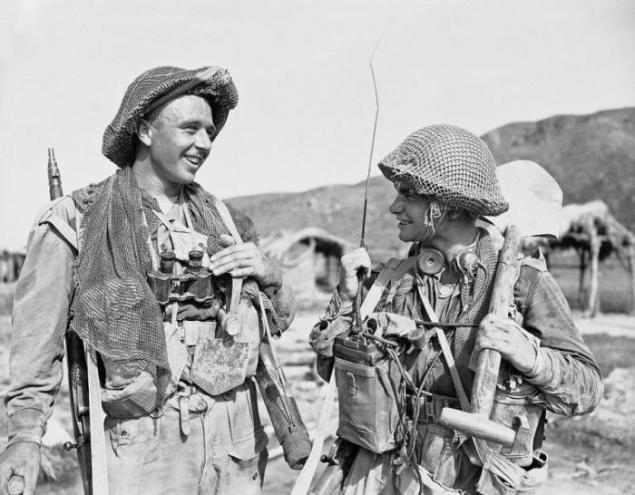
American soldiers in the ditch along the road, passing near Naktonganga in South Korea. September 19, 1950.
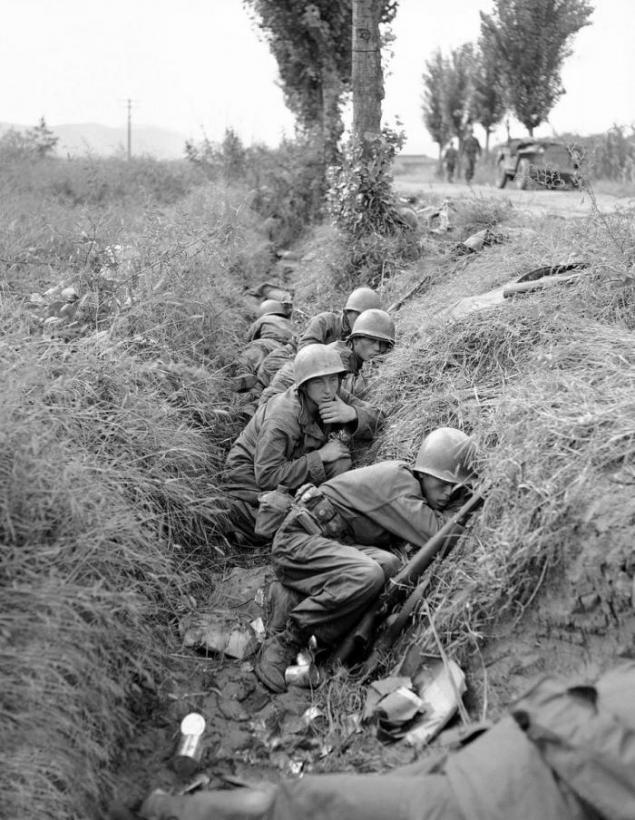
American military policeman searches Korean refugees in search of hidden weapons on the beach Naktonganga in South Korea. September 27, 1950 Mr.
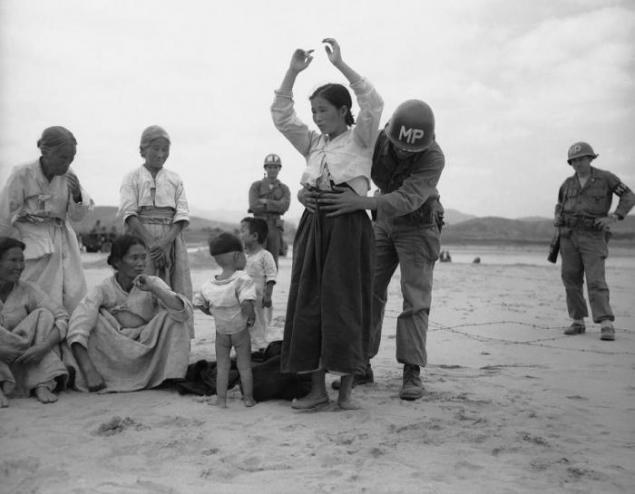
Smoke rises above the streets littered with debris in the captured Seoul. Tanks of UN forces in moving forward on 28 September 1950.
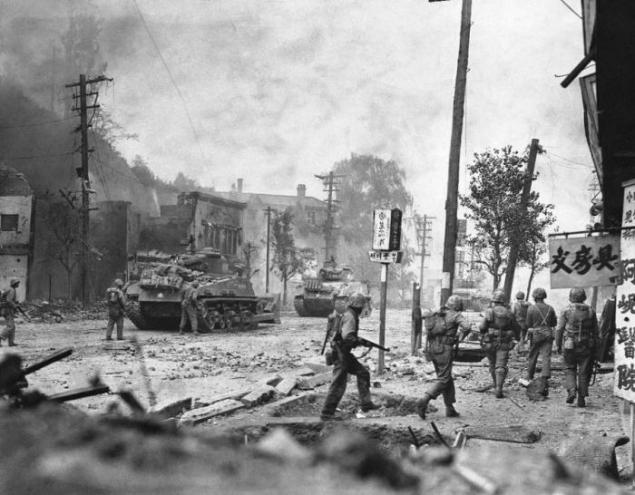
General Douglas MacArthur, Commander of UN forces on the bridge of the USS "McKinley" upon his arrival at Inchon in September 1950
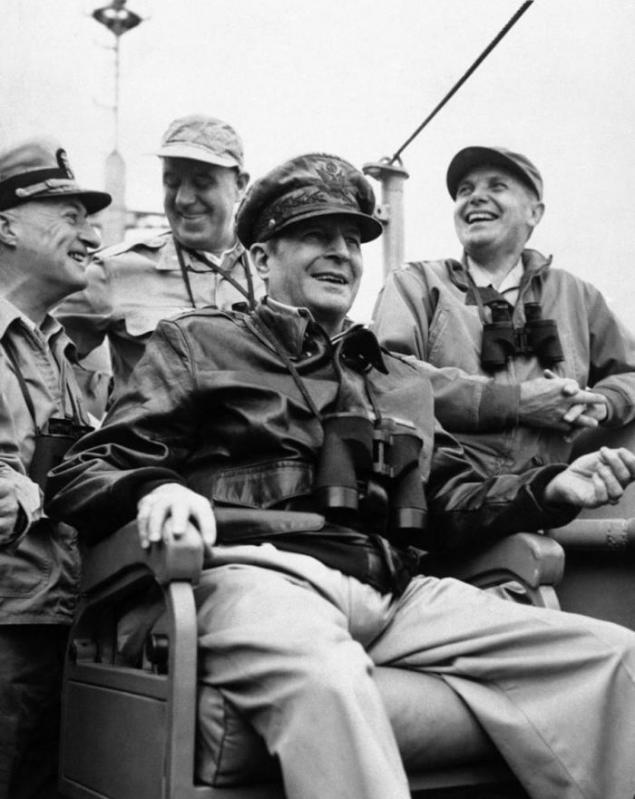
Fight to the north of the 38th parallel. September 1950
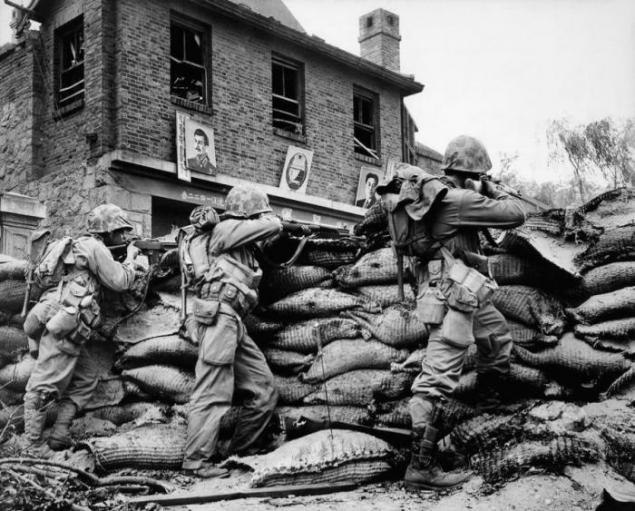
American Tank way through enemy roadblocks near Seoul October 7, 1950
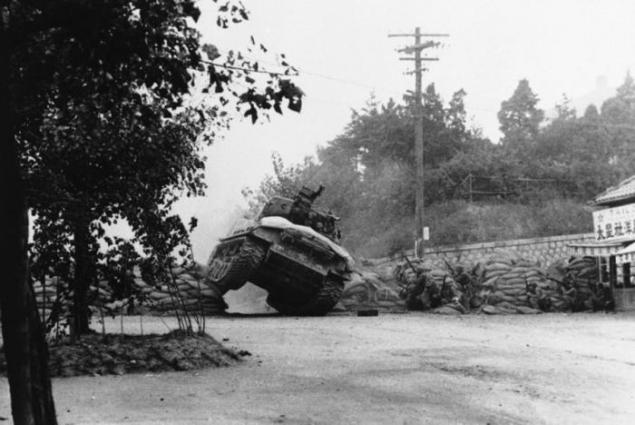
Two children orphaned by the war, in a ditch beside the body of his dead mother on the way to Pyongyang, North Korea, October 22, 1950.
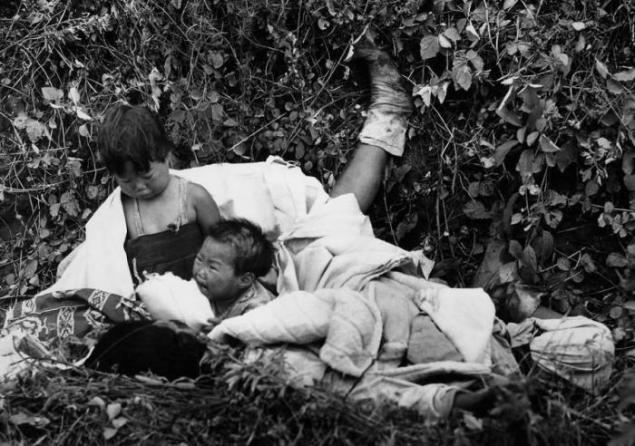
Detained US patrol operating in North Korea in the area south Kusong, November 16, 1950.
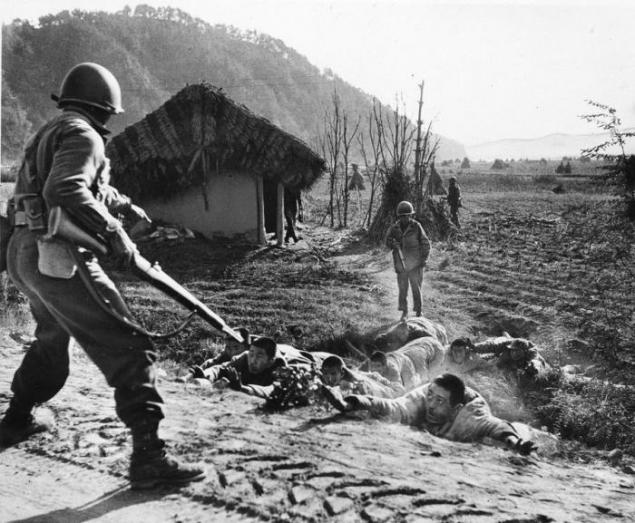
The victims of frostbite 1st Marine Division and 7th Infantry Division awaiting evacuation of the aircraft in the vicinity of Changjin, North Korea, December 22, 1950
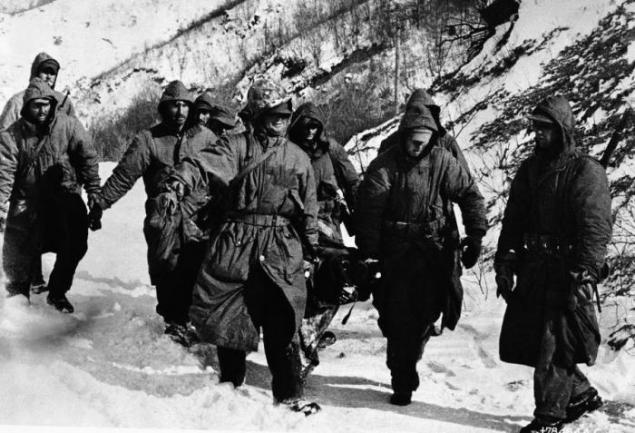
Refugees fleeing by train from North Korea to the south of the advancing communist troops from the north. December 1950.
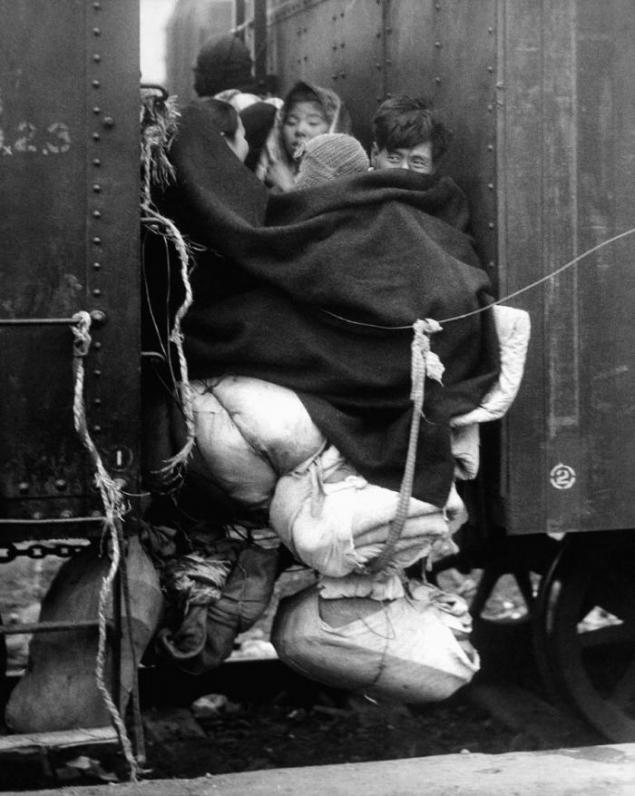
Refugees fleeing by train from the capital to the south. More than half of 1 million. Residents left the city of Seoul, which threatens offensive communist troops from the north. December 27, 1950
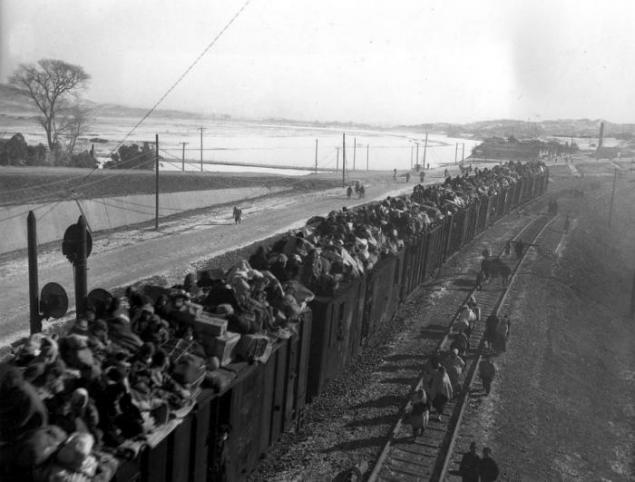
American troops in Korea. November 27, 1950.

American colonies near downed North Korean T-34-85. Korea.
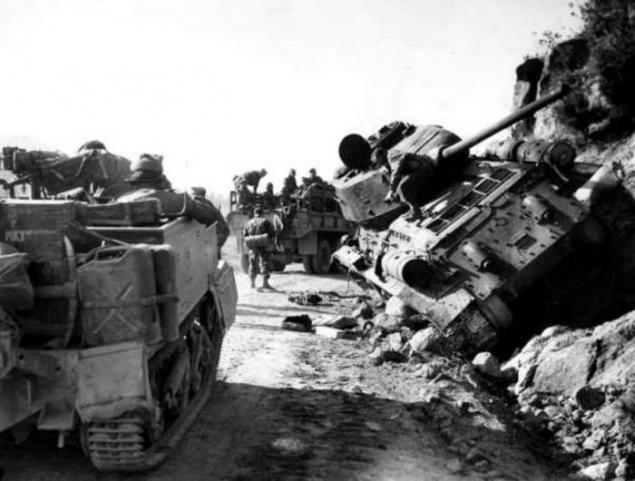
US soldiers inspect a captured North Korean weapons of Soviet manufacture.
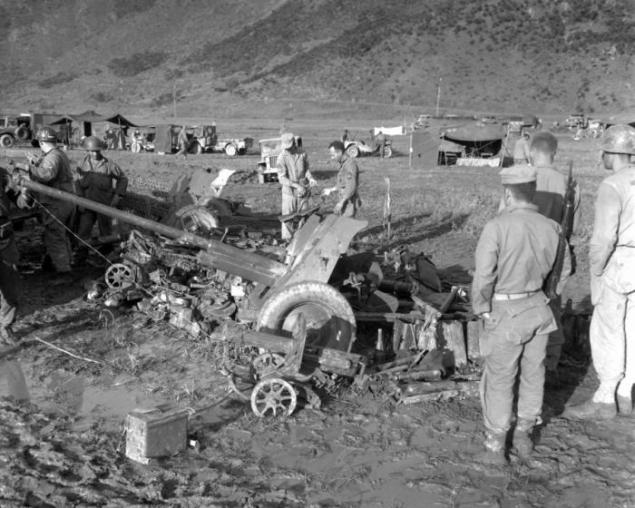
US soldiers inspect captured North Korean 45-mm cannon.
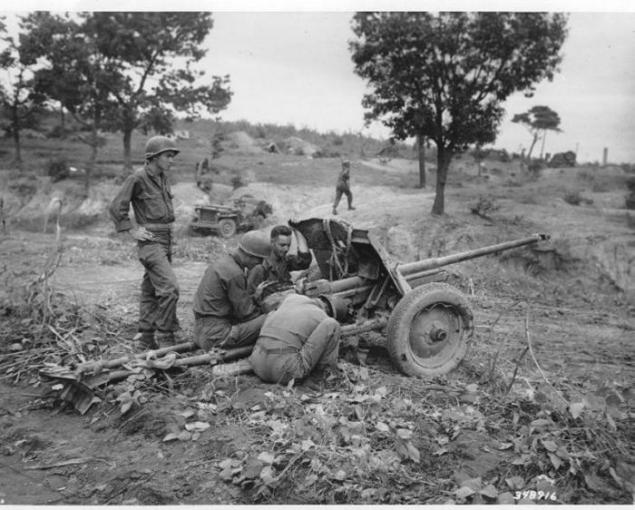
US soldiers inspect captured North Korean SAU SU-76M.
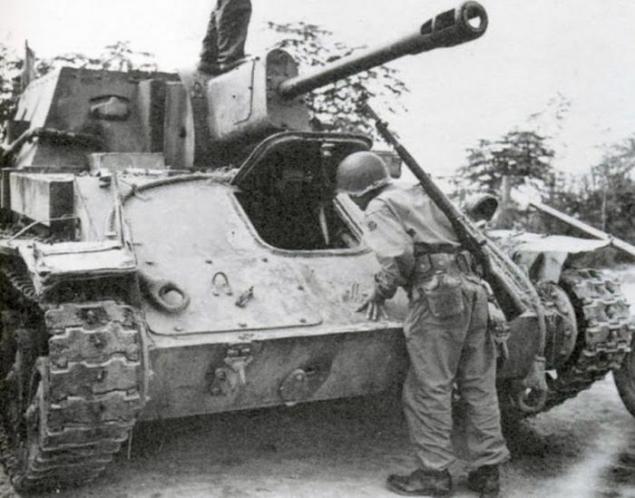
American soldiers of the 2nd Infantry Division, carries on his back in the rain to the clinic immediately after the wounded best front line in South Korea.
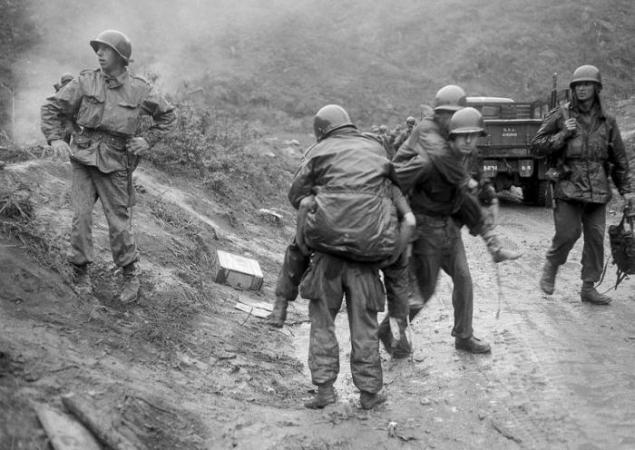
In central Korea during a lull in the fighting soldiers of the 1st Marine Division. In the chair Richard J.. West, Private 1st Class John J.. Clements shaves his neck
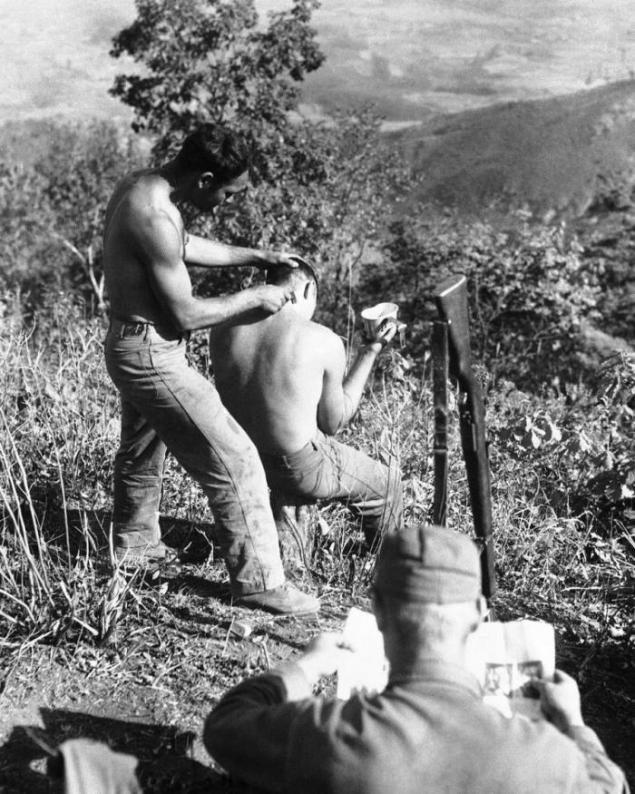
American soldiers are on the snow on the crest of a hill somewhere near Seoul, Korea. January 3, 1951
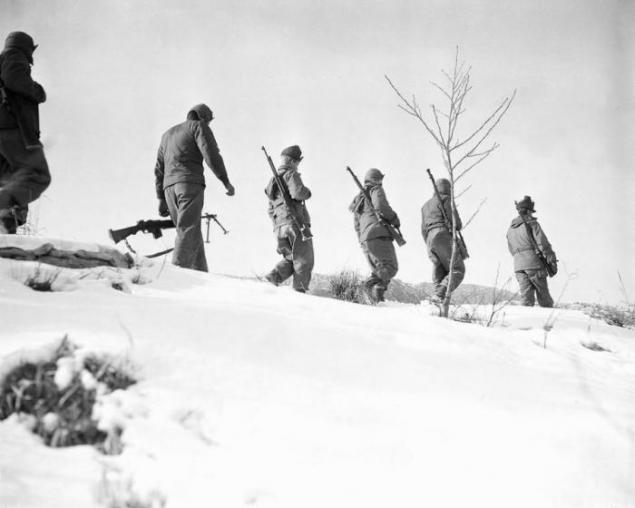
American soldiers used entrenching tool to burrow into the Korean hills north of Seoul. January 8, 1951.
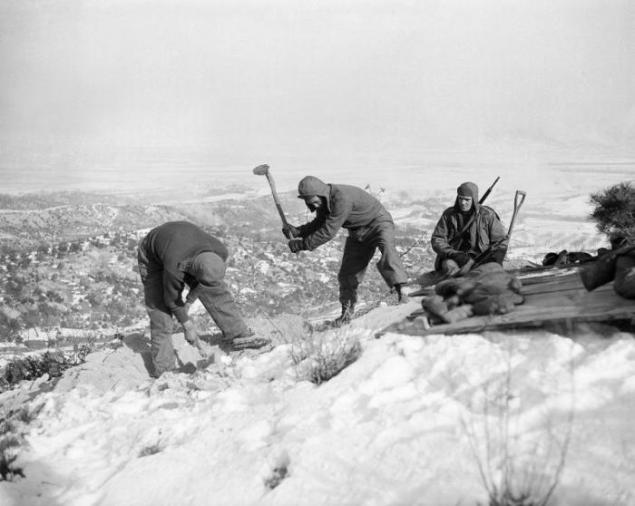
American soldiers on the front line south of Chisondong during the fight with the guerrillas. January 26, 1951

Corporal Clifford Rogers from Muskogee (Oklahoma) looks at related slain Koreans found in deep snow January 27, 1951 near Yanji
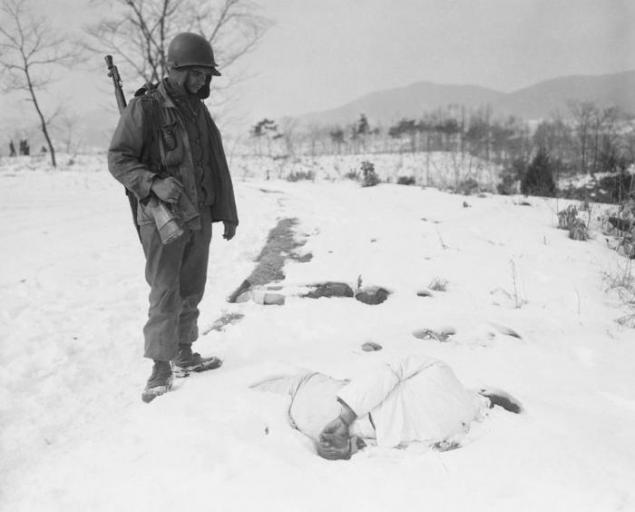
American patrol sets 75-mm recoilless gun on top of a hill 419 on the Korean front. February 3, 1951.
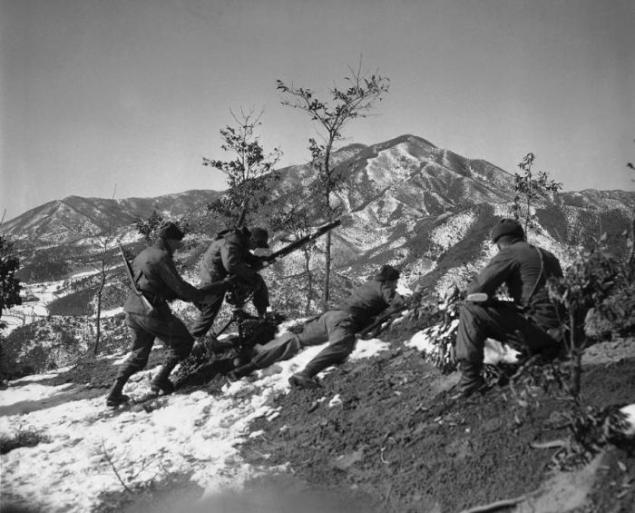
British tank "Churchill" in the position of the Han River in Yongdungpo, South Korea. February 11, 1951.
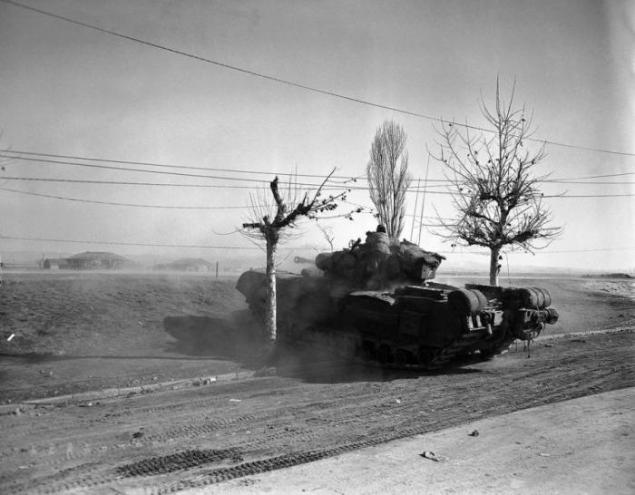
American soldiers of the 25th Infantry Division, prepare a hot meal during a lull in the fighting against the Chinese Communist forces in Korea. February 16, 1951
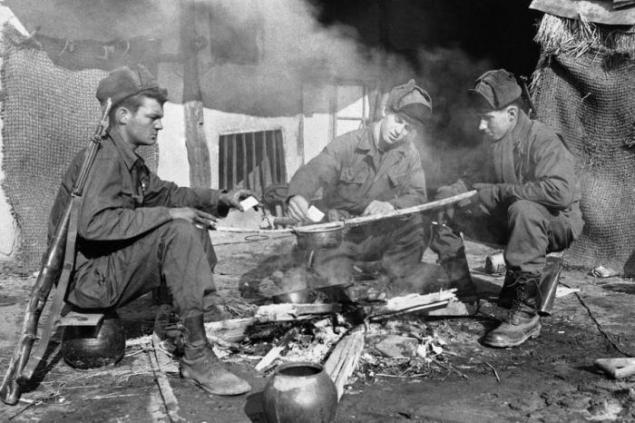
Corporal Earl R. Baker (left) from Norfolk (Virginia) and Sergeant Charles Holcomb (Houston, Texas) rest in Chipyong, Korea. February 23, 1951.
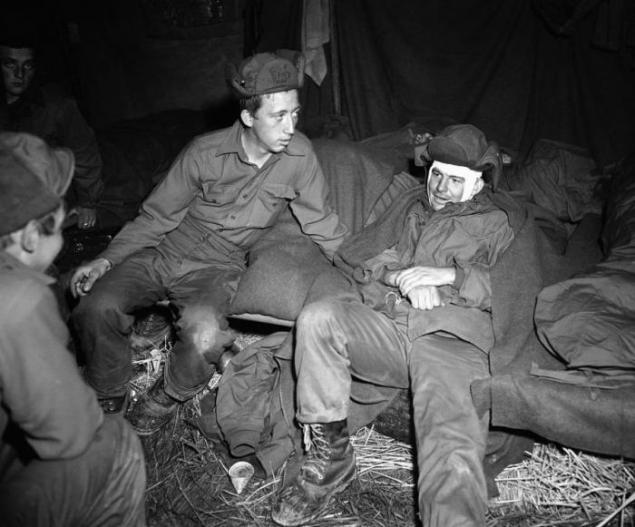
Americans are driving through mud creek as we move forward against the Chinese Communists in the central portion of the Korean front to the north of Hoensonga March 7, 1951
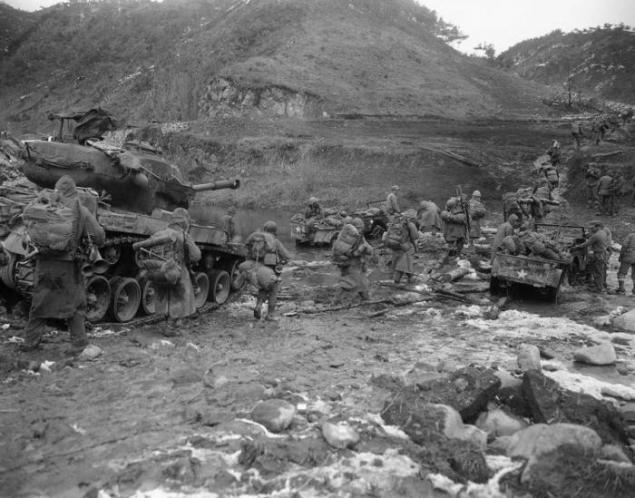
1st Division Marines goes north of Hongchon on a winding road in the central portion of the Korean front. March 16, 1951.
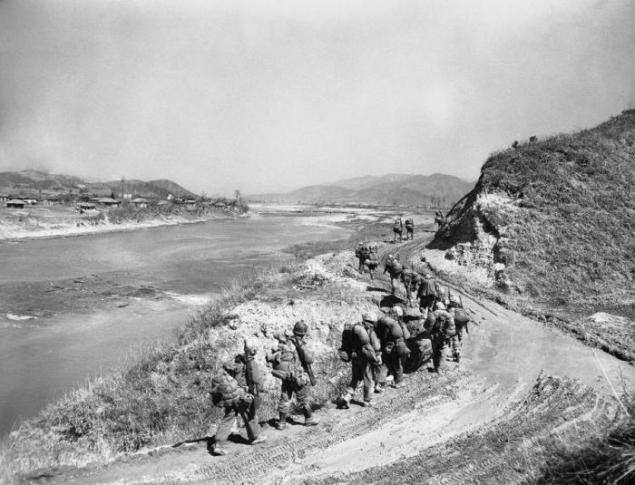
1st Cavalry Division takes g.Chhunchhon. Major General Charles D. Palmer (division commander) and Colonel Marcel Grombez, the regimental commander. March 21, 1951
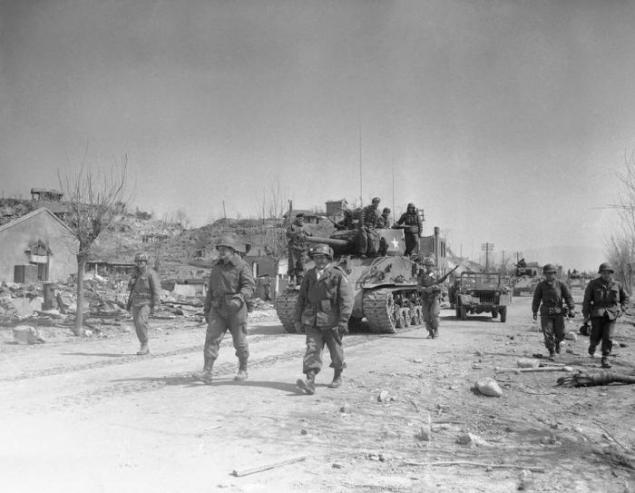
Flags draped coffins of victims of the Korean War. Among the dead Major General Bryant E. Moore, a former commander of the 9th Corps US troops. March 21, 1951
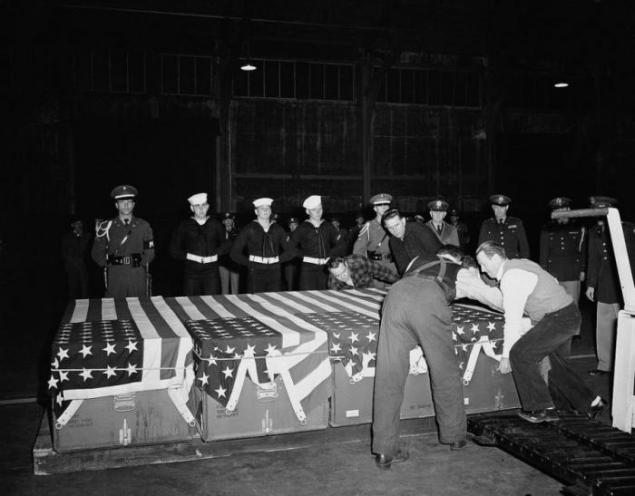
Jeep 1st Cavalry Division, stuck in the river Pukhan the central Korean front, gets help from the tank mates. March 24, 1951.
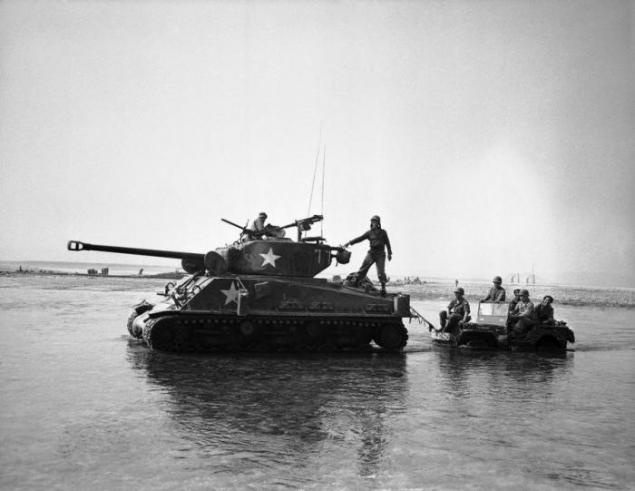
UN troops move along the dusty road somewhere in Korea. April 22, 1951.
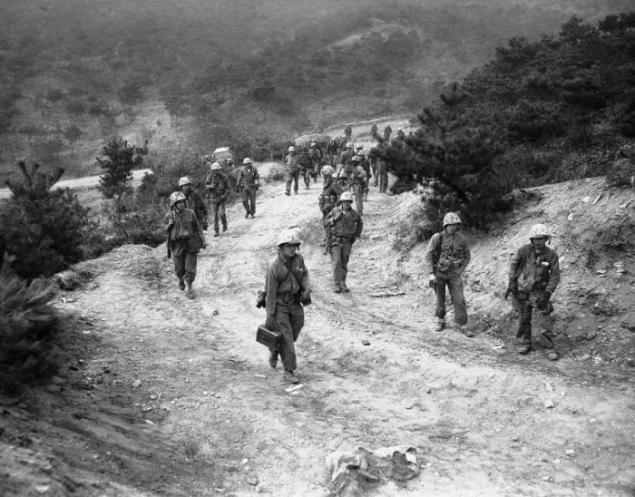
Bearded North Korean American cigarette between his fingers clumsy, talking with gestures patrol the US Marine Corps. April 28, 1951.
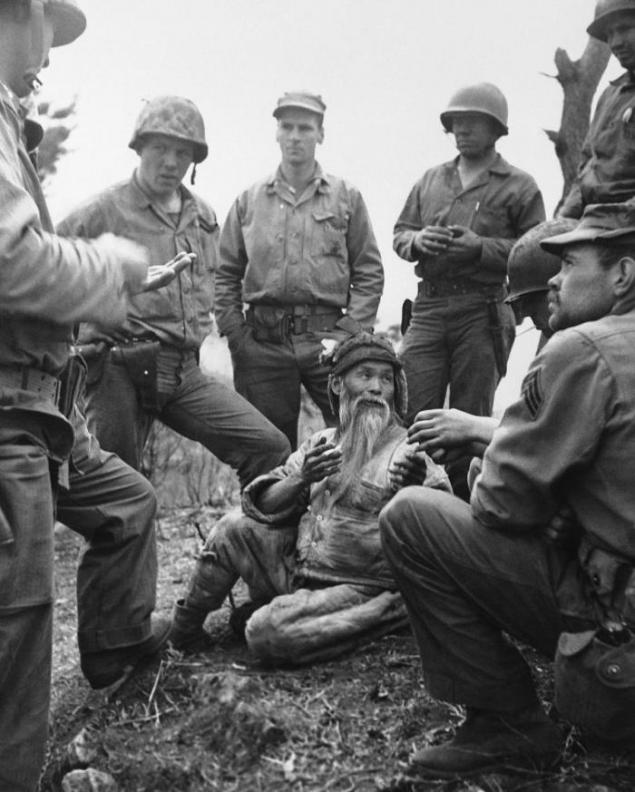
US Marines depart south along the highway on the Western Front to new positions pursued by Chinese troops. April 29, 1951.
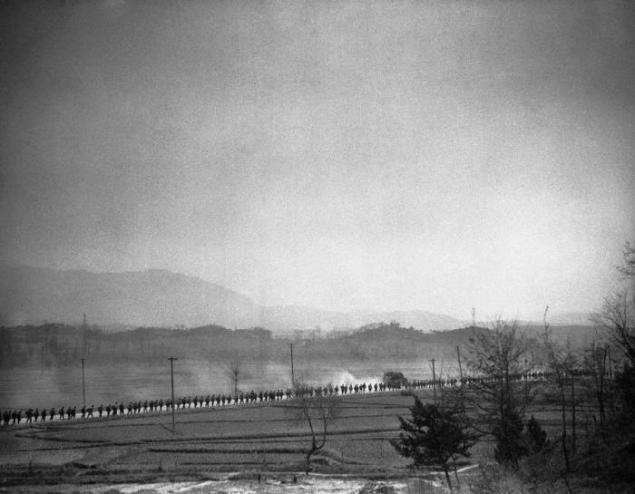
US Marine uses a flamethrower to clear the enemy from the bunker on the central front in Korea. May 7, 1951.
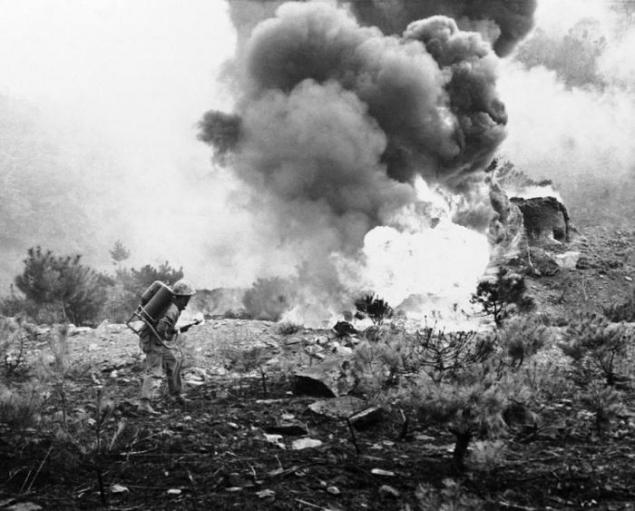
US soldiers guarding the artillery outpost in the west central part of the best in Korea. June 9, 1951.
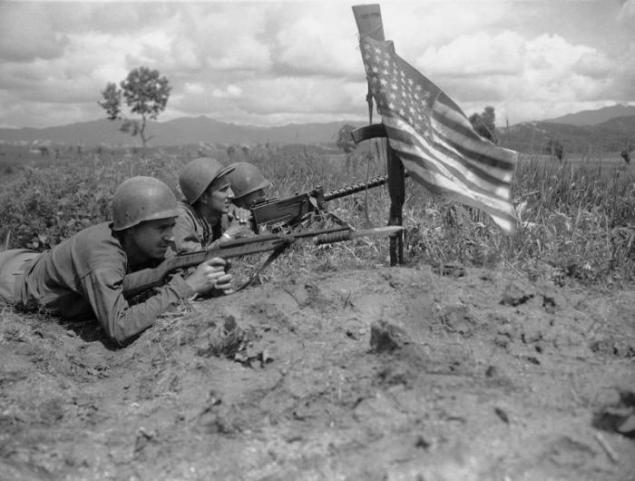
British tank «Centurian», stuck on Korean road north of Seoul. June 22, 1951.
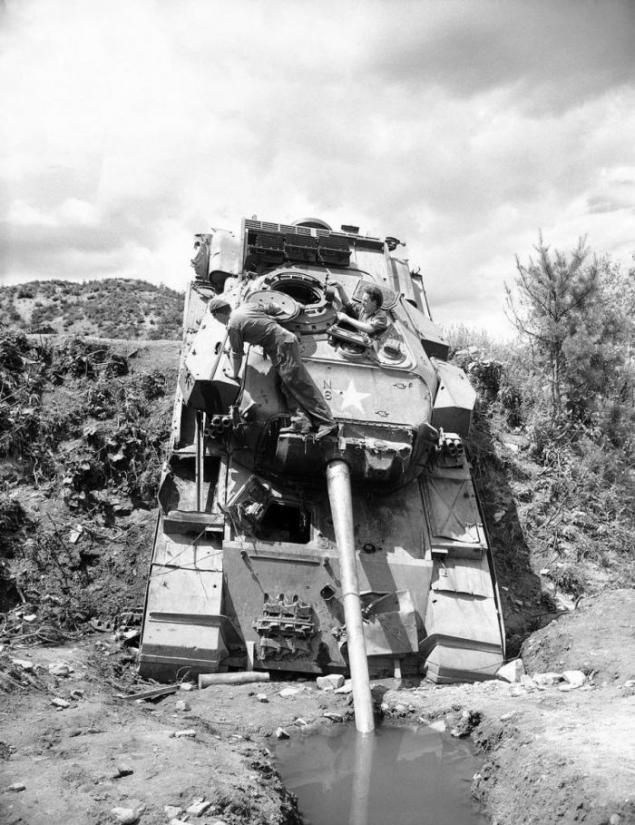
Helicopter S-48 3rd Rescue Air Squadron evacuates wounded soldiers. July 7, 1951.

American troops of the 1st Cavalry Division landed on the shore Pohang on the east coast of Korea. It was the first combat amphibious operation since the end of June 1950 Mirovoy.25

American soldiers at a railway station in Daejeon, South Korea, on the way to the front. June 25, 1950

Two American soldiers of the 2nd Infantry Division used a screwdriver to search for on the road from Changnyong to Naktongangu south Daegu set guerrillas night min. June 25, 1950

US Marines are going forward on a ridge in South Korea. June 25, 1950

American soldiers are firing 105-mm howitzers. June 25, 1950

Pyongyang residents and refugees from other parts of North Korea, are moving on a destroyed bridge farm, they run south across the Taedong River from the advancing Chinese communist troops. June 25, 1950

Two American soldiers on the front line somewhere in Korea with a bazooka on 24 July 1950.

Gunners of the 25th Infantry Division of firing 105-mm howitzers on North Korea's position in the region Uirson. August 27, 1950.

American infantryman crying on the shoulder of another soldier about his friend who was killed in battle. Left medic fills the documents of the death. Somewhere in Korea, 28 August 1950

American soldiers of the 25th Infantry Division throws a grenade at the enemy sniper hiding in a village 20 miles north of Daegu, near Naktonganga, August 29, 1950

Corporal Arthur Worrell (right foreground) from New York, from the 25th Division, carries the wounded prisoners of North Koreans in the hospital for treatment. September 1, 1950

English Sergeant Derrick Deamer (left) and Private Clem Williams in full armor in the UK sector of the front in Korea in the area Naktonganga. September 14, 1950

American soldiers in the ditch along the road, passing near Naktonganga in South Korea. September 19, 1950.

American military policeman searches Korean refugees in search of hidden weapons on the beach Naktonganga in South Korea. September 27, 1950 Mr.

Smoke rises above the streets littered with debris in the captured Seoul. Tanks of UN forces in moving forward on 28 September 1950.

General Douglas MacArthur, Commander of UN forces on the bridge of the USS "McKinley" upon his arrival at Inchon in September 1950

Fight to the north of the 38th parallel. September 1950

American Tank way through enemy roadblocks near Seoul October 7, 1950

Two children orphaned by the war, in a ditch beside the body of his dead mother on the way to Pyongyang, North Korea, October 22, 1950.

Detained US patrol operating in North Korea in the area south Kusong, November 16, 1950.

The victims of frostbite 1st Marine Division and 7th Infantry Division awaiting evacuation of the aircraft in the vicinity of Changjin, North Korea, December 22, 1950

Refugees fleeing by train from North Korea to the south of the advancing communist troops from the north. December 1950.

Refugees fleeing by train from the capital to the south. More than half of 1 million. Residents left the city of Seoul, which threatens offensive communist troops from the north. December 27, 1950

American troops in Korea. November 27, 1950.

American colonies near downed North Korean T-34-85. Korea.

US soldiers inspect a captured North Korean weapons of Soviet manufacture.

US soldiers inspect captured North Korean 45-mm cannon.

US soldiers inspect captured North Korean SAU SU-76M.

American soldiers of the 2nd Infantry Division, carries on his back in the rain to the clinic immediately after the wounded best front line in South Korea.

In central Korea during a lull in the fighting soldiers of the 1st Marine Division. In the chair Richard J.. West, Private 1st Class John J.. Clements shaves his neck

American soldiers are on the snow on the crest of a hill somewhere near Seoul, Korea. January 3, 1951

American soldiers used entrenching tool to burrow into the Korean hills north of Seoul. January 8, 1951.

American soldiers on the front line south of Chisondong during the fight with the guerrillas. January 26, 1951

Corporal Clifford Rogers from Muskogee (Oklahoma) looks at related slain Koreans found in deep snow January 27, 1951 near Yanji

American patrol sets 75-mm recoilless gun on top of a hill 419 on the Korean front. February 3, 1951.

British tank "Churchill" in the position of the Han River in Yongdungpo, South Korea. February 11, 1951.

American soldiers of the 25th Infantry Division, prepare a hot meal during a lull in the fighting against the Chinese Communist forces in Korea. February 16, 1951

Corporal Earl R. Baker (left) from Norfolk (Virginia) and Sergeant Charles Holcomb (Houston, Texas) rest in Chipyong, Korea. February 23, 1951.

Americans are driving through mud creek as we move forward against the Chinese Communists in the central portion of the Korean front to the north of Hoensonga March 7, 1951

1st Division Marines goes north of Hongchon on a winding road in the central portion of the Korean front. March 16, 1951.

1st Cavalry Division takes g.Chhunchhon. Major General Charles D. Palmer (division commander) and Colonel Marcel Grombez, the regimental commander. March 21, 1951

Flags draped coffins of victims of the Korean War. Among the dead Major General Bryant E. Moore, a former commander of the 9th Corps US troops. March 21, 1951

Jeep 1st Cavalry Division, stuck in the river Pukhan the central Korean front, gets help from the tank mates. March 24, 1951.

UN troops move along the dusty road somewhere in Korea. April 22, 1951.

Bearded North Korean American cigarette between his fingers clumsy, talking with gestures patrol the US Marine Corps. April 28, 1951.

US Marines depart south along the highway on the Western Front to new positions pursued by Chinese troops. April 29, 1951.

US Marine uses a flamethrower to clear the enemy from the bunker on the central front in Korea. May 7, 1951.

US soldiers guarding the artillery outpost in the west central part of the best in Korea. June 9, 1951.

British tank «Centurian», stuck on Korean road north of Seoul. June 22, 1951.

Helicopter S-48 3rd Rescue Air Squadron evacuates wounded soldiers. July 7, 1951.



